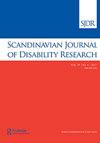Assisting Visually Impaired People Using Deep Learning-based Anomaly Detection in Pedestrian Walkways for Intelligent Transportation Systems on Remote Sensing Images
IF 1.7
Q2 REHABILITATION
引用次数: 1
Abstract
Anomaly detection in pedestrian walkways of visually impaired people (VIP) is a vital research area that utilizes remote sensing and aids to optimize pedestrian traffic and improve flow. Researchers and engineers can formulate effective tools and methods with the power of machine learning (ML) and computer vision (CV) to identifying anomalies (i.e. vehicles) and mitigate potential safety hazards in pedestrian walkways. With recent advancements in ML and deep learning (DL) areas, authors have found that the image recognition problem ought to be devised as a two-class classification problem. Therefore, this manuscript presents a new sine cosine algorithm with deep learning-based anomaly detection in pedestrian walkways (SCADL-ADPW) algorithm. The proposed SCADL-ADPW technique identifies the presence of anomalies in the pedestrian walkways on remote sensing images. The SCADL-ADPW techniques focus on the identification and classification of anomalies, i.e. vehicles in the pedestrian walkways of VIP. To accomplish this, the SCADL-ADPW technique uses the VGG-16 model for feature vector generation. In addition, the SCA approach is designed for the optimal hyperparameter tuning process. For anomaly detection, the long short-term memory (LSTM) method can be exploited. The experimental results of the SCADL-ADPW technique are studied on the UCSD anomaly detection dataset. The comparative outcomes stated the improved anomaly detection results of the SCADL-ADPW technique.基于遥感图像的智能交通系统行人通道深度学习异常检测辅助视障人士
视障行人通道异常检测是利用遥感和辅助技术优化行人交通、改善人流的重要研究领域。研究人员和工程师可以利用机器学习(ML)和计算机视觉(CV)的力量制定有效的工具和方法,以识别异常(即车辆)并减轻行人通道中的潜在安全隐患。随着ML和深度学习(DL)领域的最新进展,作者发现图像识别问题应该被设计为一个两类分类问题。因此,本文提出了一种新的基于深度学习的行人通道异常检测正弦余弦算法(SCADL-ADPW)。所提出的SCADL-ADPW技术可以在遥感图像上识别人行道异常的存在。SCADL-ADPW技术侧重于异常的识别和分类,即VIP人行道上的车辆。为了实现这一点,SCADL-ADPW技术使用VGG-16模型进行特征向量生成。此外,SCA方法是为最优超参数调优过程而设计的。对于异常检测,可以利用长短期记忆(LSTM)方法。在UCSD异常检测数据集上研究了SCADL-ADPW技术的实验结果。对比结果表明,SCADL-ADPW技术的异常检测效果有所改善。
本文章由计算机程序翻译,如有差异,请以英文原文为准。
求助全文
约1分钟内获得全文
求助全文
来源期刊

Scandinavian Journal of Disability Research
REHABILITATION-
CiteScore
3.20
自引率
0.00%
发文量
13
审稿时长
16 weeks
 求助内容:
求助内容: 应助结果提醒方式:
应助结果提醒方式:


